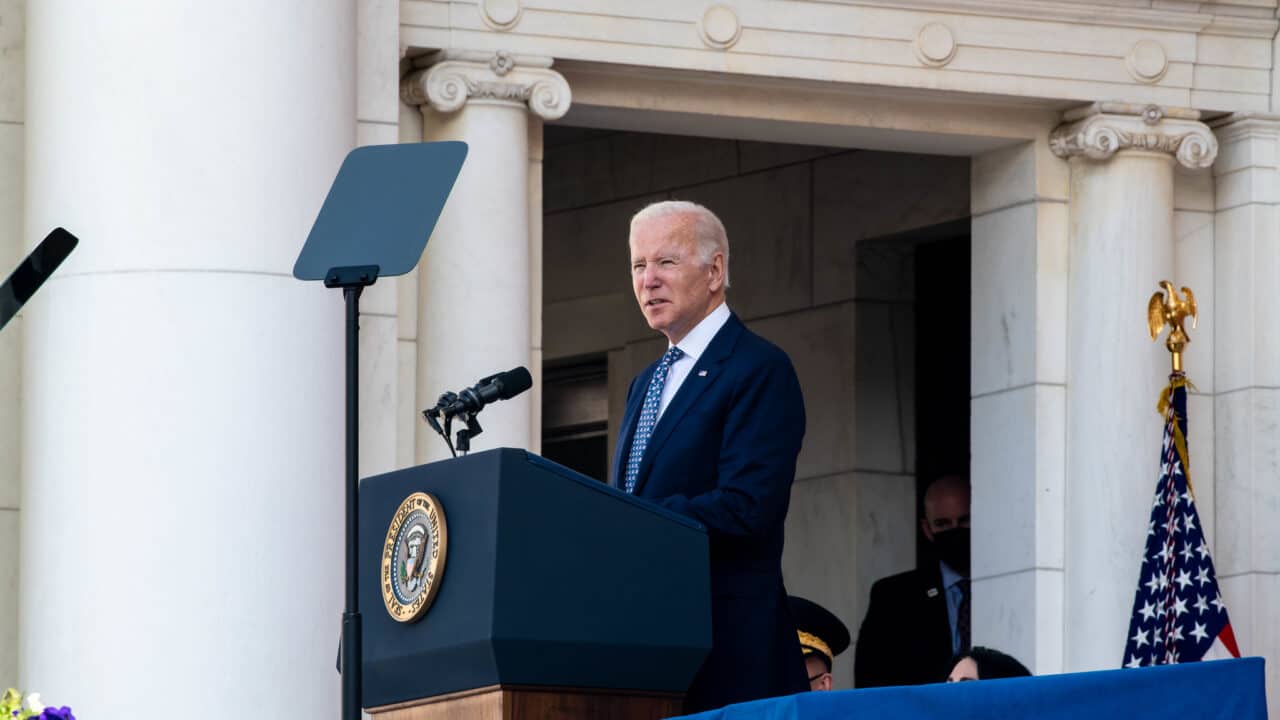 Photo by U.S. Department of Defense on Flickr is licensed under CC BY 2.0: https://bit.ly/40QCGbQ
Photo by U.S. Department of Defense on Flickr is licensed under CC BY 2.0: https://bit.ly/40QCGbQ
President Joe Biden made several misleading points about energy policy during his 2023 State of the Union address. Here are the top five.
CLAIM: Gas prices have fallen during Biden’s term.
“Here at home, gas prices are down $1.50 a gallon since their peak.”
In 2023, American drivers paid the highest gas prices for the month of January on record, averaging more than $3.45 per gallon. Biden also chose not to mention that prices still remain 42 percent higher than they were on the day he took office. The Biden administration’s ill-advised energy policies caused gas prices to more than double within the first 17 months of his tenure as president, followed by an eventual, partial decrease in price. The White House has often taken credit for temporary decreases in the price of gas––despite denying that the president had anything to do with gas prices when they were still increasing.
CLAIM: Energy inflation only exists due to the pandemic and the Ukraine War.
“Inflation has been a global problem because of the pandemic that disrupted supply chains and Putin’s war that disrupted energy and food supplies.”
Biden administration officials have repeatedly claimed that the increases in gas prices are “a direct result of the invasion of Ukraine.” While constricted global oil supply after Putin initiated his war in Ukraine plays a role, it is far from an exhaustive explanation for energy inflation. Gas prices had already skyrocketed nearly 50 percent between Biden’s inauguration and February 2022, when Russia invaded its neighbor.
Biden began his presidency by suspending new oil and natural gas leases on public lands and waters, cancelling the Keystone XL pipeline, and rejoining the disastrous Paris Climate Accords. His signature legislative projects like the so-called “Inflation Reduction Act” also added new inflationary taxes on oil and natural gas production. Long before Putin’s invasion, these policies led directly to increases in energy inflation and indirectly to increases in general inflation, as nearly all of the goods we consume require oil and gas for their production and transportation.
CLAIM: The government-led shift to clean energy helps workers.
“Clean energy to cut pollution and create jobs in communities too often left behind.”
To the contrary, Biden’s aggressive attempts to move the country from fossil fuels to less efficient clean energy have cost thousands of jobs, especially among those communities which are often left behind. A quietly released report from the Department of Energy last month revealed that Biden’s decision to shut down the Keystone XL pipeline alone cost the country between 16,000 and 59,000 jobs. Another 46,000 jobs in the coal and petroleum fuels industries were lost on Biden’s watch throughout 2021, according to last year’s U.S. Energy and Employment Report. Despite implications from Biden administration officials that coal and petroleum workers could simply transition “to make the solar panels,” the industries share neither identical skillsets nor similar geography. Worse yet, every power plant and mining job lost on average leads to four additional job losses in the local community.
CLAIM: Green energy subsidies are helping the average family.
“Helping families save more than $1,000 a year with tax credits for the purchase of electric vehicles and energy-efficient appliances.”
Biden’s so-called “Inflation Reduction Act” added $7,500 subsidies for electric vehicles built in North America, creating new costs for taxpayers and drawing the ire of America’s trade allies. The Congressional Budget Office estimated that the subsidies will cost taxpayers more than $7.5 billion by 2031––and the average American won’t see any benefit. According to the U.S. Energy Information Administration, two-thirds of households who own an electric car make over $100,000 a year, putting the purchase out of reach for most Americans. Further, the Joint Committee on Taxation estimates that 83 percent of the tax credits go to households earning over $100,000 a year. This is no surprise; the average cost of an electric car is $66,000, a price which has only increased following Biden’s subsidies.
On the appliance front, the Biden administration’s new regulations creating stricter efficiency standards for gas stoves could block 95 percent of appliances currently on the market, according to industry leaders. The Department of Energy itself says that over half of gas stove models on the market today would not comply with the new standards, which they admit would raise the upfront cost of the products by $32.5 million per year for consumers.
CLAIM: Energy companies haven’t invested in production.
“They invested too little of that profit to increase domestic production and keep gas prices down.”
Biden started his presidency with an executive order banning new oil and gas leasing on federal lands and waters. Despite the White House placing blame for lack of supply on oil producers, Biden has leased fewer acres offshore and on federal lands for drilling than any president since World War II. The administration has failed to take any action to increase permitting, reduce regulatory burdens, or decrease taxation to allow for higher production levels. Instead, they’ve done the opposite.
Even so, oil companies have been increasing their production where they are able. For example, Chevron in 2022 increased its Permian Basin production by 15 percent year-over-year. Exxon Mobil similarly ramped up production in the basin by 100,000 barrels per day in 2022.
One thing Biden did get right: “We’re still going to need oil and gas for a while.”

